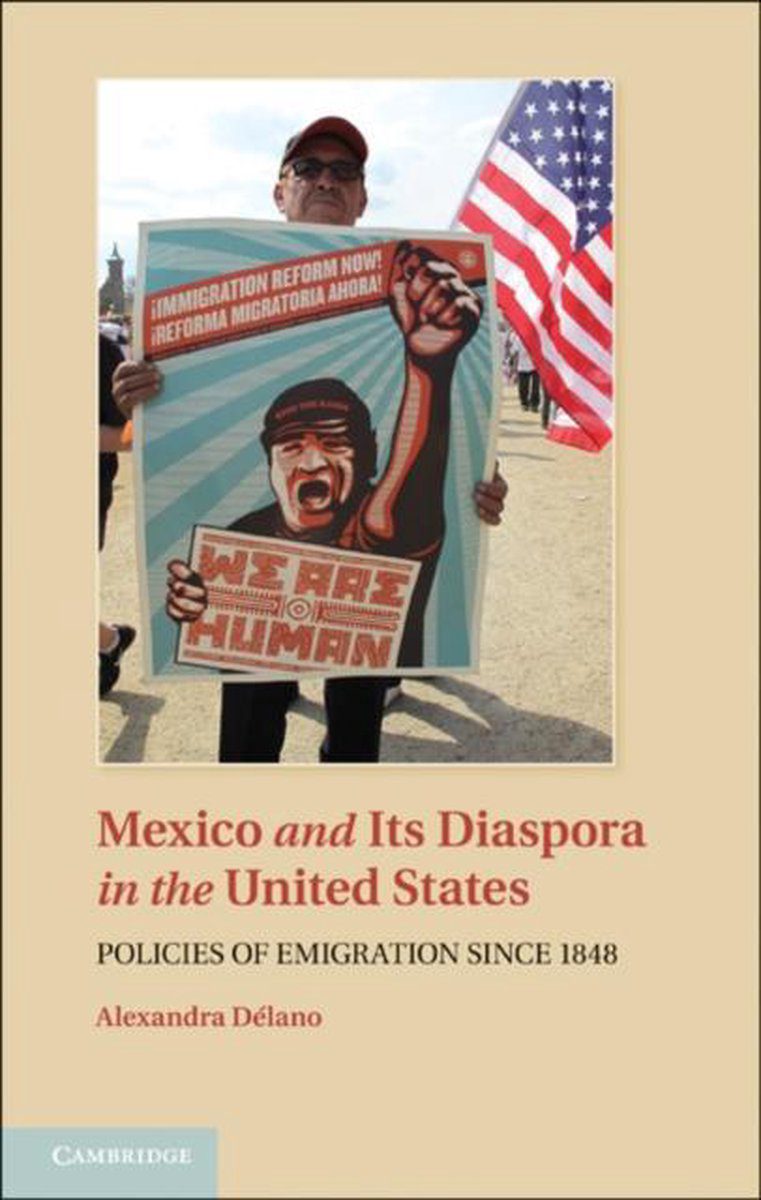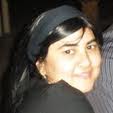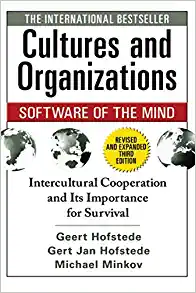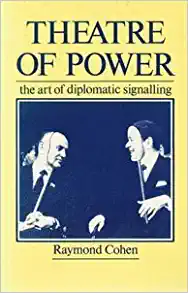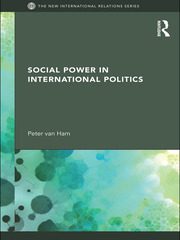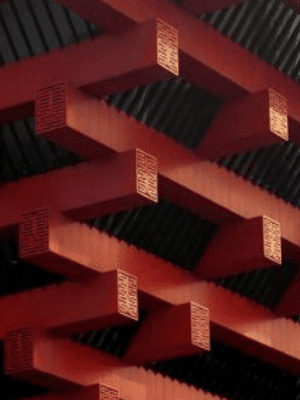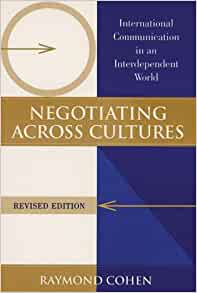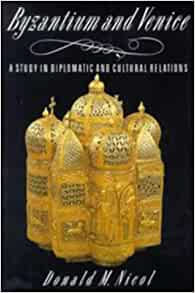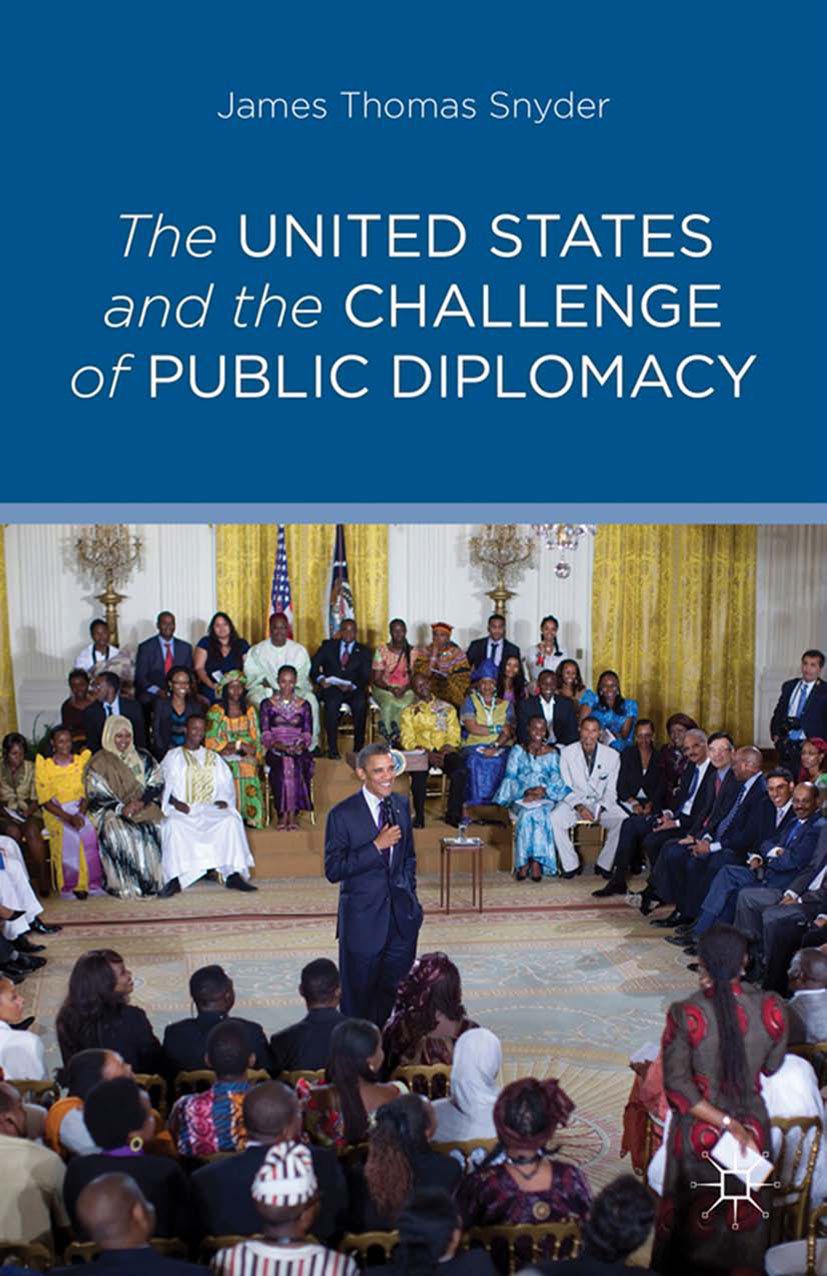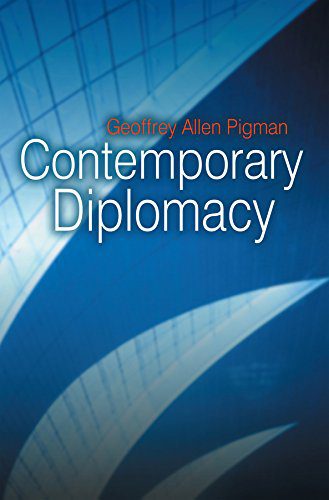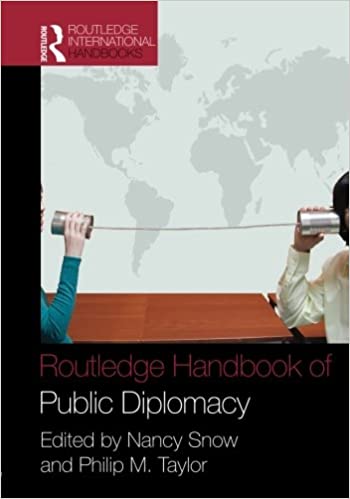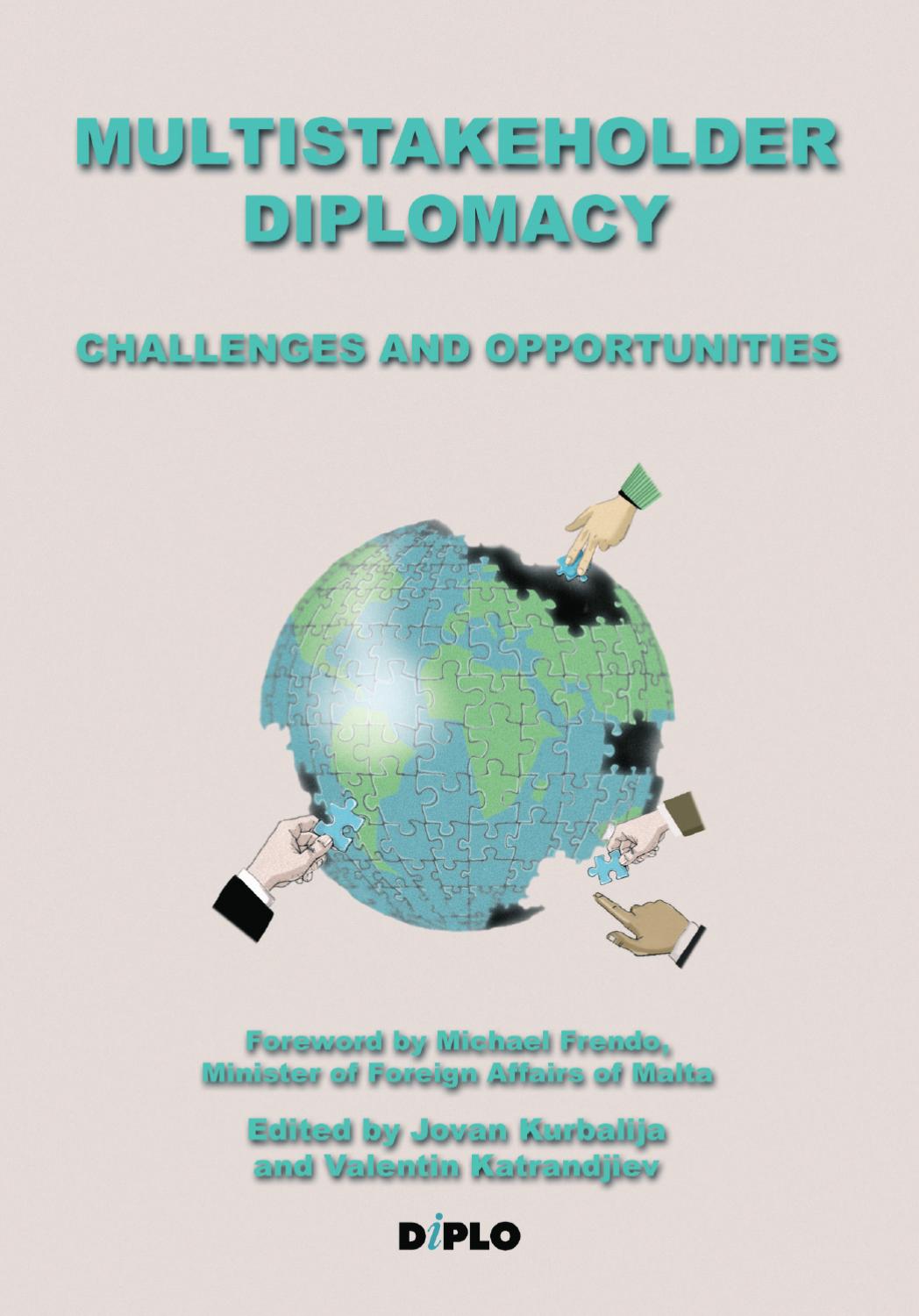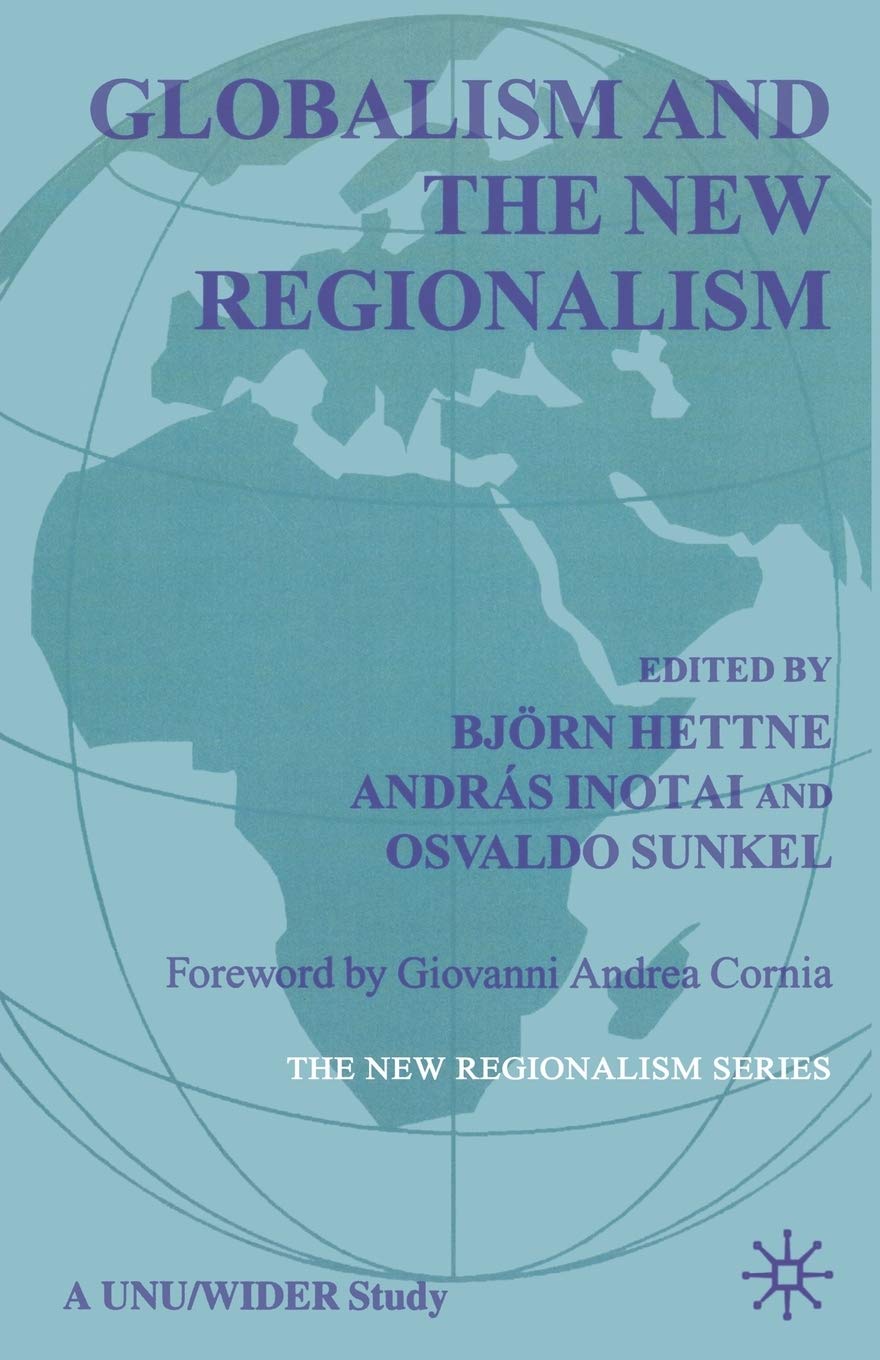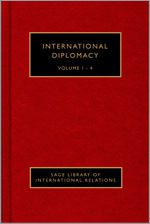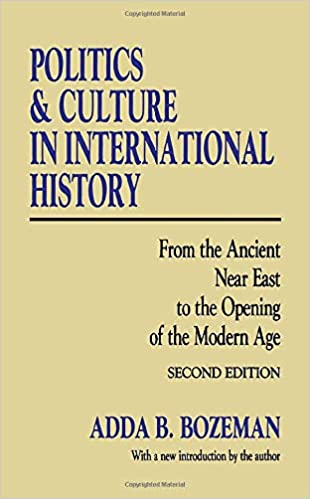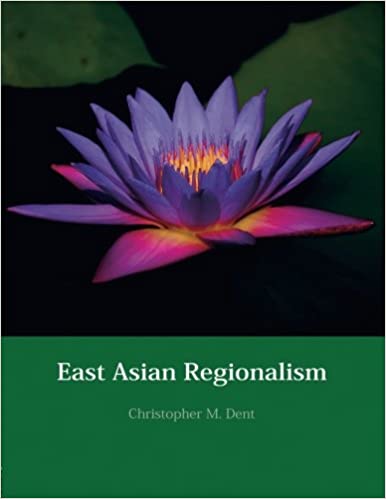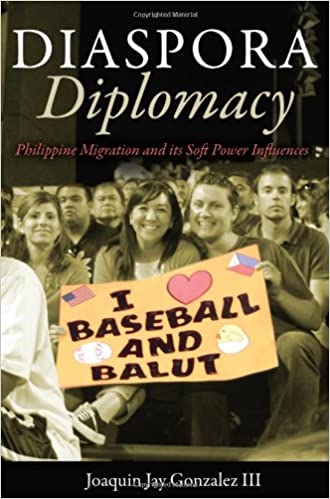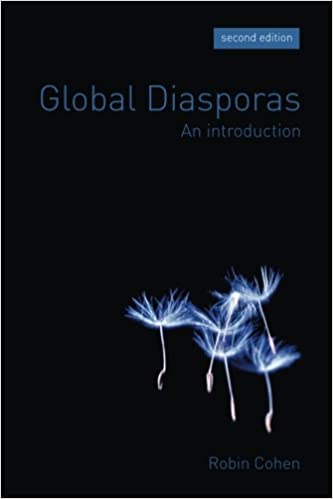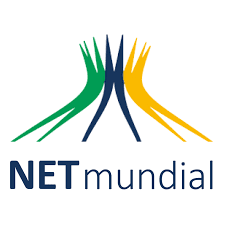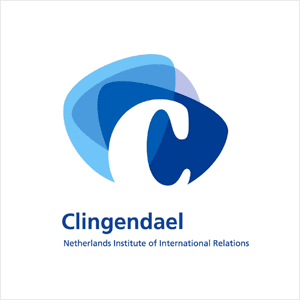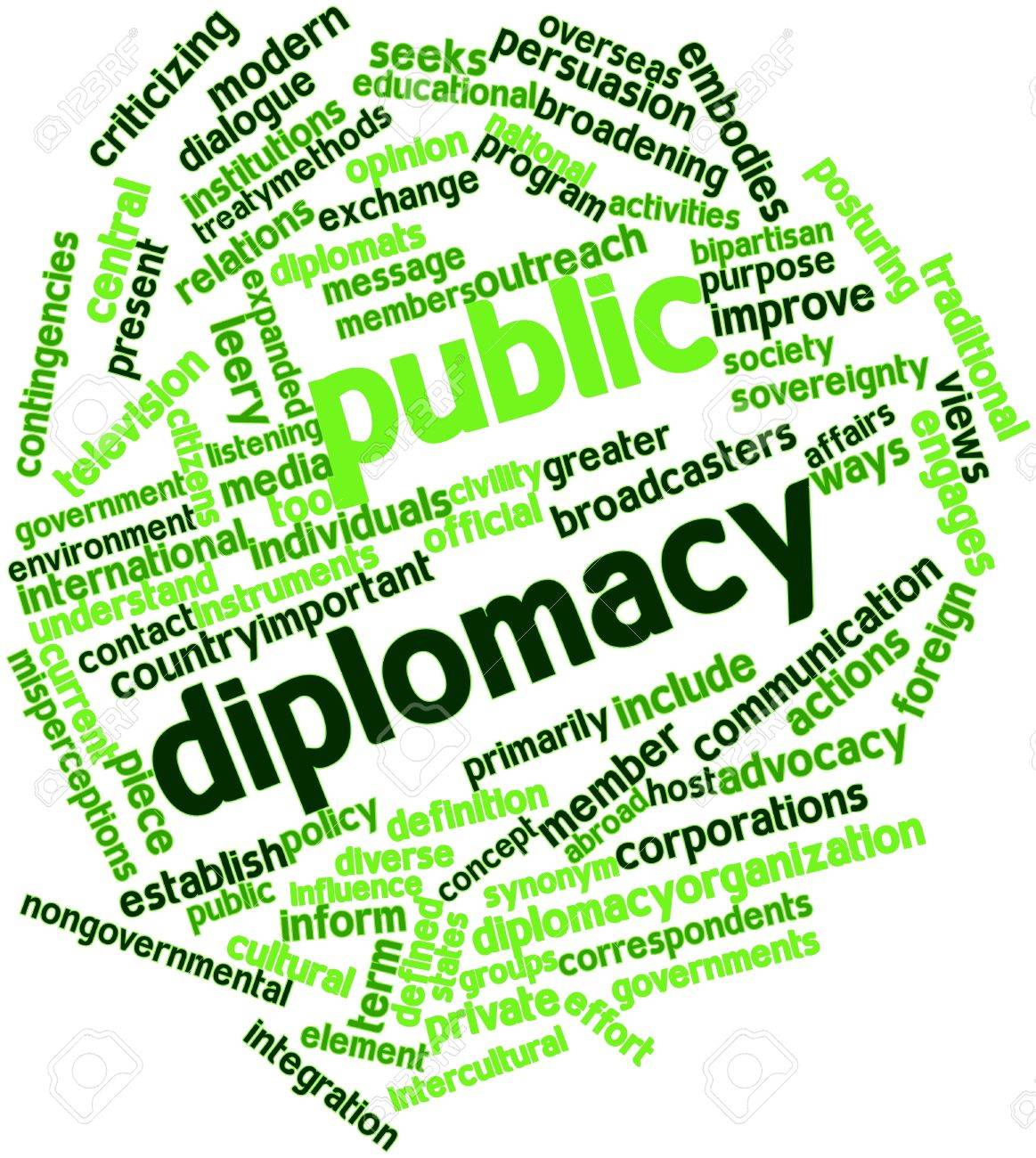Cultural prestige has always followed troops and trade as a measure of a nation’s influence.1Michael Z. Wise, “How Nations Wave the Flag of Culture,” International Herald Tribune, 16 April 2002. Available online at http://www.iht.com/articles/54766.html
This paper is a comparative examination of the websites of the ministries of foreign affairs of China, India, Germany, France, Chile, Brazil, the US, Canada, and several African states and their diplomatic representation abroad. The research is case study oriented. The results are summarized in a comparative assessment table. The objective is to evaluate the websites from the point of view of culture and to analyze their usefulness for the conduct of cultural and public diplomacy. The study also aims to determine the extent to which the official web presence of foreign ministries and their respective missions abroad contributes to intercultural dialogue and understanding. The selection of target countries was not random, but was based on a careful consideration of two factors: geographic representation and choice of countries that traditionally have used culture as a part of their diplomatic strategy.
The Importance of Culture
It has become a cliché to continuously emphasize the impact of culture on the conduct of modern diplomacy. Nonetheless, culture is a source of immense power capable of shaping, changing, and influencing diplomatic community perceptions. From a broader perspective, culture may defuse ethnic and religious prejudices and create a climate of tolerance, respect, and understanding among nations and religions around the globe. Therefore, it is an essential medium for peaceful and tolerant interaction. From a narrower point of view, culture is the indispensable bridge that helps diplomats walk into the hearts and minds of their respective audiences. Culture helps diplomacy do its job at various diplomatic receptions. If properly introduced (in the form of appropriate cultural events such as musical and theatrical evenings, art exhibits, and film showings), the use of culture dispels the sense of officialdom overshadowing a great number of diplomatic gatherings. Cultural settings become a favorable place for diplomats to exchange precious ideas, to acquire vital information, to pass essential messages, and, in general, to provide a channel of unofficial diplomatic negotiation. A growing number of governments acknowledge the influence of culture on the conduct of diplomatic relations and refer to it as a vital venue for the better positioning of their countries in the international arena.
Before discussing case studies, I would like to offer working definitions of two of the terms used in this paper:
Diplomatic system: The institutional and organizational framework for execution of a country’s foreign policy. The framework encompasses the ministry of foreign affairs (MFA) and its diplomatic missions abroad.
Cultural content: Culturally oriented information embedded in the form of text, hyperlinks, pictures, audio, and video within websites of MFAs and their diplomatic representation abroad.
Case Studies: Latin America
Brazil
The website of the Brazilian MFA is modest in terms of cultural content. However, a useful definition of Brazilian cultural diplomacy2Brazilian MFA website: http://www.mre.gov.br/ingles/structure/foreing_relations/services/cultural.asp can be found in the “Ministry/Services” folder. This concise one-page report focuses on the organization of cultural work in the ministry and on areas of responsibility of the cultural department (such as the negotiation and implementation of agreements and cultural programs, maintenance of contacts with local and foreign partners, and overall managerial and budgetary supervision of cultural events staged under the auspices of Brazil’s embassies abroad). Brazil’s multifaceted relationship with UNESCO is mentioned as well.
The Portuguese language3Brazilian MFA website: http://www.mre.gov.br/ingles/procura_detalhada/politica_externa/cplp.asp is the common cultural and historical bond uniting Portugal with its former colonies, providing an essential channel of communication. The website offers a short description of the organizational structure, mission, objectives, and activities of the Community of Portuguese-Speaking Countries (CPLP). The latter is the analogue of the British Commonwealth and Francophone communities.
Brazilian art4Brazilian government website: http://www.mre.gov.br/ingles/resultado_detalhada.asp?assunto=1&p_chave=109 is featured on a separate page indirectly linked to the Brazilian MFA site. The well-structured content on this site offers an insightful glance at the multicultural and diverse way of life in Brazil, its traditions and customs, as well as various forms of artistic and cultural expression and accomplishments. A wealth of information with some degree of multimedia application and many hyperlinks facilitates a cultural excursion through the largest Latin American country. Brazil’s multicultural identity results from a lasting ethnic and racial co-existence of different cultural traditions.
The cultural content of the Brazilian Embassy in London5Brazilian Embassy in UK website: http://www.brazil.org.uk is orderly, functionally presented, and regularly updated. Culture-related information is well integrated into the context of the entire webpage. It is uncomplicated and easily accessible. Various facets of Brazilian culture such as architecture, cinema, dance, fine arts, fashion, literature, music, photography, theatre, religion, and sports appear in a compact informational whole supported by photo images. The site also furnishes interested experts with the text of the cultural convention6Brazilian Embassy in UK website: http://www.brazil.org.uk/page.php?pid=2086, the legal instrument for Brazilian-British cultural relations. The content is a helpful informational and promotional tool for Brazilian diplomats in the host country.
Chile
The website of the Ministry of Chilean External Relations7Chilean MFA website: http://www.minrel.cl offers a special section related to cultural issues. The centrally positioned content is easily noticed. It mainly introduces the principal organ of cultural diplomacy – the Department of Cultural Affairs (DCA) – its place, role, mission, and areas of supervisory activities. Being an integral part of the country’s diplomatic machinery, the department is considered and presented as a main tool for designing and implementing Chilean cultural diplomacy. It works in close contact with the country’s cultural institutions and 160 Chilean diplomatic missions abroad. The department acts as a principal negotiator and concluder of cultural conventions with other countries. The content underscores the importance of the DCA within the framework of other foreign and cultural policy instruments. The webpage provides methodical guidelines for holding events (festivals, biennales of arts, exhibitions, fairs), explains cultural project participation, mechanisms of sponsorships and grants offered to Chilean cinematographers, painters, dancers, and other artists. However, it is not exclusively the propagation and diffusion of Chilean artistic and cultural pursuits and products that the DCA promotes. Through its net of associations, universities, and private and public foreign agencies, the department jointly manages the coordination of cultural projects of regional scope (Middle East, EU, Asia Pacific). Such initiatives contribute to cross-cultural exchanges and facilitate the networking activities conducted by Chilean diplomatic missions.
Chilean web diplomatic representation abroad: Within a limited number of available webpages, cultural content is traceable in cases where Chilean diplomats pursue traditionally active cultural relations with receiving states. Such is the case with Italy and Australia. The Chilean mission in Rome8Chilean Embassy in Italy website: http://www.chileit.it, for example, uses the web actively as a window to project the nation’s identity, to convey the artistic and literary spirit to a highly inquisitive Italian public. On the other hand, the website of the Chilean embassy in Canberra9Chilean Embassy in Australia website: http://www2.embachile-australia.com focuses on cultural events in the most general terms, offering some narrative content and photos. The content is embedded in the mission’s overall activities.
Case Studies: Europe
France
In Europe, France is among the leading nations to use culture to promote their national interests. Paris succeeded in making French the dominant academic and diplomatic language of 18th and 19th century Europe. The 20th century gave birth to the first French educational institutions abroad, which further projected Paris’s cultural influence. The example was later successfully emulated by Germany, Britain, and Italy. As one of the former principal European colonial powers, France has preserved its influence in various corners of Africa, Asia, and Latin America by the spread of its language, artistic and architectural achievements, and way of life.
The Ministry of Foreign Affairs of France10French MFA website: http://www.diplomatie.gouv.fr/accueil.gb.html maintains a special cultural section. The cultural content is placed in a separate thematic folder and is rich in substance and form. The content is best approachable via the multilingual page of the FMA website. The page smartly integrates cultural issues into the context of other topics, providing a helpful asset in the conduct of France’s cultural and public diplomacy.
Language: Information is presented mainly in French, targeting the French-speaking community. The extent of the francophone community worldwide is ample testament to the French cultural legacy and its sustained influence.
Organs of cultural diplomacy: The site features valuable information concerning the activities of the General Administration for International Cooperation and Development Department of the MFA, responsible for implementation of the country’s cultural policy and cultural exchange programs. A definition of France’s international cultural policy is provided as well. Principal bodies responsible for France’s cultural work abroad are introduced in line with their place and rank in the framework of France’s bilateral relations under the “Cultural Action and Cooperation Network.” A searchable database facilitates the discovery of information related to French cultural centers.
Intercultural communication: Bridges of intercultural dialogue, understanding and cooperation are developed through virtual web demonstrations of (a) French scientific and artistic achievements, aimed at foreign audiences and (b) the artistic accomplishments of foreign cultures (e.g., diverse African cultures), aimed at the French public. Multimedia is moderately utilised.
The cultural section on the joint French embassy website for Zambia and Malawi11French Embassy in Zambia and Malawi website: http://www.ambafrance-zm.org/indexeng.html brings French methods of education and culture closer to these African nations. The content is well-delivered, including an outline of cultural and linguistic cooperation and full texts of bilateral agreements. It also presents the opportunities the French cultural center offers to the local publics. The site reinforces the French cultural presence and is an example of dynamic web cultural diplomacy.
Germany
The official webpage of the German MFA offers unproblematic and relatively good visibility of cultural content. Culture-related information appears under the “Foreign Policy” branch, titled, “Cultural Relations and Education Policy.” The content is organized in a one-page overview. The main topics are initially introduced by succinct and informative summaries. A number link below each theme sheds further light on the nature of Berlin’s cultural diplomacy, its types, and actors. A full-text PDF format for documents, authentic interviews and speeches reinforces that perception.
Cultural policy framework12German MFA website: http://www.auswaertiges-amt.de/www/en/aussenpolitik/kulturpolitik/grundsaetze/index_html: The cultural factor has played a lasting role in shaping Berlin’s external relations. Accordingly, the cultural policy which underscores the cultural dimension of those relations is thoroughly explained starting from concept, areas of cooperation, to budget and legal issues.
Culture is frequently perceived as a process of intellectual mastering and accomplishment via research or training. The website pays special attention to exchange programs13German MFA website: http://www.auswaertiges-amt.de/www/en/aussenpolitik/kulturpolitik/wissenschaft/index_html in the field of secondary and university education. Here, cultural content is used as enticement for promising foreign students and academics to carry out their specialization on German soil. However, the content gives very little clue concerning the nature of cooperation programs with foreign countries except for some valuable information on German-American and Franco-German forms of cooperation initiatives.
Language learning14German MFA website: http://www.auswaertiges-amt.de/www/en/aussenpolitik/kulturpolitik/sprache/index_html: German language studies abroad are integrated into the Foreign Office’s cultural agenda. Study of the German language is encouraged in regions where Berlin maintains a traditional cultural presence (The Commonwealth of Independent States, Eastern and Central Europe). The content related to German language studies offers practical information to potential students and introduces the Goethe Institute, an organ of cultural diplomacy, and other agencies that oversee the education process. A full address list of German cultural societies serves as a helpful guide. The organization and functioning of official and private organizations involved in the formulation and execution of German cultural diplomacy are reviewed briefly.
Diplomatic efforts to reclaim Germany’s works of art15German MFA website: http://www.auswaertiges-amt.de/www/en/eu_politik/aktuelles/kulturhauptstadt2010_html are also reflected on the website. Here, the content alerts the international community of an unresolved problem relating to the repatriation of German cultural heritage and property.
At the core of European affairs, Berlin actively uses its MFA website to publicize major Euro-based cultural events. One example is the Cultural Capital programme, which offers the opportunity for a number of European cities (including 10 German cities) to apply to become one of two Europe Cultural Capitals for 2010. Cultural cooperation remains an essential tool of the European integration process.16Ibid., http://www.auswaertiges-amt.de/www/en/eu_politik/aktuelles/
kulturhauptstadt2010_html
German Embassy in Sofia, Bulgaria17German Embassy in Bulgaria website: http://www.sofia.diplo.de/de/Startseite.html: This website illustrates the extent to which the content is empowered to help the conduct of German cultural diplomacy in missions abroad. The functional layout is practically identical with that of the MFA webpage. A separate section, not yet fully operational, is dedicated to cultural issues. A substantial drawback is that information is still offered in English and German only and not in Bulgarian. The content explains exclusively German cultural objectives. In comparison, the web presence of the Dutch embassy in Sofia18Dutch Embassy in Bulgaria website: http://www.netherlandsembassy.bg seeks a more effective balance between promotion of Holland’s cultural accomplishments and offering visible web space for the recognition of the culture of the host country. A German citizen who wants to pay a visit to a foreign country may be interested in the way of life, social rules, and customs of the people with whom he or she is about to get acquainted. The website of the German embassy, therefore, should perform this function. Websites are expected to encourage intercultural understanding and dialogue through appreciation and balanced presentation of different cultural patterns.
Case Studies: Asia
China
On the official MFA website of China19Chinese MFA website: http://www.fmprc.gov.cn/eng, cultural content is hidden within the context of many other topics. Relevant information can nonetheless be found.
China’s bilateral relations: Cultural relations are perceived as an integral part of overall bilateral relations. The “Countries and Regions” section features information about China’s relations with other countries. It also provides valuable insight on cultural and educational exchange programs and cooperation agreements. An example is the illustration of Sino-Indian20Chinese MFA website: http://www.fmprc.gov.cn/eng/wjb/zzjg/yzs/gjlb/2711/default.htm and Sino-Iranian21Chinese MFA website: http://www.fmprc.gov.cn/eng/wjb/zzjg/xybfs/gjlb/2818/default.htm relations.
The cultural content addresses the sensitive issues of Taiwan and Tibet. The international community occasionally casts a critical eye on China’s human rights policy in its autonomous region. In response, Beijing’s diplomatic strategy is to treat Tibetan Buddhism, the mysticism of Tibetan folklore and Tibetan artistic achievements in the context of Chinese historical heritage (see: Tibetan Art Exhibition in Estonia22Chinese MFA website: http://www.fmprc.gov.cn/eng/wjb/zwjg/zwbd/t39664.htm) and About China/Tibet23Chinese MFA website: http://www.fmprc.gov.cn/eng/ljzg/3585/3592/default.htm). The website reflects the official Chinese position of respect for the unique Tibetan cultural tradition, creating the impression of openness towards Tibet. Regarding Taiwan, the MFA uses the website as a tool of cultural diplomacy to publicize China’s position. In addition, information about Taiwan presented on the website is used as a channel for public diplomacy to convey important foreign policy messages to the outside world24Chinese MFA website: http://www.fmprc.gov.cn/eng/ljzg/3568/default.htm.
China’s partnership with specialized UN organs is highlighted as well. Particular importance is attached to relations between China and UNESCO25Chinese MFA website: http://www.fmprc.gov.cn/eng/wjb/zzjg/gjs/gjzzyhy/2594/2600/t15187.htm.
China has not yet developed an extensive web presence for its diplomatic missions abroad. An examination the websites of the Chinese diplomatic missions in Russia26Chinese Embassy in Russia website: http://www.chinaembassy.ru, South Africa27Chinese Embassy in South Africa website: http://www.chinese-embassy.org.za/eng/c4237.html, and Beijing’s UN mission in Geneva28Chinese diplomatic representation in Geneva website: http://www.china-un.ch/eng/index.html shows a certain amount of cultural information, mainly consisting of announcements of various cultural events and exchanges. China’s mission in Jakarta, Indonesia29Chinese Embassy in Indonesia website: http://www.chinaembassy-indonesia.or.id/eng/c3792.html is an exception. This site is one of the best and exhaustive attempts to utilize cultural content for the realization of China’s foreign policy objectives. It provides a natural bridge between a sizable Chinese population living in Indonesia and the Chinese motherland. The special section, “Culture and Education,” is particularly intended to serve that purpose but is still under construction.
India
General introduction to Indian culture: The Indian Ministry of External Affairs30Indian MFA website: http://www.meadev.nic.in website guides the reader into a special cultural portal with an appealing title, “Discover India.”31Indian MFA website: http://meadev.nic.in/earthquake/culture/overview.htm This portal offers a concise but highly informative guide to Indian arts, clothing, cuisine, dance, literature, education, festivals, films, history, languages, monuments, music, religion, theatre, and galleries. The site is easy to navigate, with hyperlinks to supplementary sites containing a wealth of culturally and educationally-oriented information. (This cultural portal was operational until 2002. The updated version of the Indian MFA website32Indian MFA website: http://meaindia.nic.in does not refer to this page and cultural content is harder to locate.)
Legal framework for India’s cultural cooperation with other countries: Full-text bilateral cultural agreements are available on the MFA website, providing guidelines for cultural cooperation and very useful reference materials for practicing diplomats, cultural and arts workers, and researchers. However, finding needed information can be difficult because full-text treaties are not accessed in alphabetical country-by-country indexed order, but in a periodical and chronological way and are listed in volumes.
Information about bilateral cultural ties can be accessed via both the foreign policy/foreign relations33Indian MFA website: http://www.meadev.nic.in/foreign/intro.htm section and the bilateral treaties and agreements section34Indian MFA website: http://www.meadev.nic.in/sitemap.htm. For example, the Republic of Korea and India’s cultural exchanges35Indian MFA website: http://www.meadev.nic.in/foreign/korea.htm are examined succinctly in the bilateral relations review, where the 1972 cultural agreement is mentioned. The full text of the same bilateral agreement36Indian MFA website: http://www.meadev.nic.in/economy/ibta/volume8/chap532.htm is reachable in the treaties section. Likewise, a short review of Indian-Syrian cultural relations37Indian MFA website: http://www.meadev.nic.in/foreign/syria.htm is available in the bilateral relations section where there is also mention of the bilateral cultural agreement. The full text of the same agreement38Indian MFA website: http://www.meadev.nic.in/economy/ibta/volume8/contents8.htm can be read in the treaties section.
The bilateral treaties section provides access to a number of other full-text cultural conventions which India has signed with, for example, Yemen, Senegal, Mexico, Argentina, and Zambia. Unfortunately, these texts are not linked directly to the sections where Delhi’s bilateral relations with those states are reviewed.
The Indian Council for Cultural Relations (ICCR)39Indian MFA website: http://education.vsnl.com/iccr is a vital instrument of Indian cultural diplomacy at home and abroad. The ICCR website is directly linked to the Ministry of External Affairs homepage and offers the reader a concise profile of the ICCR, including cultural policies, goals, and mission. The information is presented in a simple narrative format with numerous hyperlinks to services offered by the Council as well as information about various branches of the organization. A sample of cultural content produced on the basis of a random search includes: CICA Declaration on Eliminating Terrorism and Promoting Dialogue among CivilizationsIndian40MFA website: http://www.meadev.nic.in/foreign/almaty-decl.htm.
The Indian MFA web cultural content is a useful promotional tool for intercultural understanding and dialogue. First, it reaches the hearts and minds of foreign audiences by conveying the richness of Indian cultural diversity. This is an important feature of the country’s national identity. The content illustrates the importance of culture in the implementation of Indian foreign policy objectives. A good combination of photos and descriptions41Indian MFA website: http://meadev.nic.in/earthquake/culture/overview.htm enhances the meaning of historic, linguistic, and artistic images that India wishes to project onto the international scene. Second, the content stimulates cultural curiosity regarding why and in what ways nations differ culturally, and demonstrates respect for cultural otherness. Third, the content emphasizes cultural commonalities as an example of the unity of modern civilization.
Indian Diplomatic Mission in Cairo42Indian Embassy in Cairo website: http://www.indembcairo.org: Indian cultural insight is offered to the Egyptian public through easy access to an “Indian Culture” section. The cultural accomplishments, customs, and traditions are introduced in storyline format with information on crafts, paintings, arts, cuisine, and costumes. The content is spread throughout various parts of the page. The “India-Egypt Bilateral Relations” section gives a chronological account of the cultural aspects of bilateral cooperation. The impact of the Islamic heritage on the formation of Indian national character is skillfully presented in a separate section with a number of informative articles. The content is available both in Arabic and English. The differences and the commonalities between the cradles of two unique and ancient civilizations are underscored. The page sets a good example of how to employ cultural web content to foster relations with a key Arab and Muslim country.
Case Studies: North America
Canada
The official website of the Canadian Department of Foreign Affairs and International Trade43Canadian MFA website: http://www.dfait-maeci.gc.ca contains a special section entitled “Culture, Education and Youth.” For the sake of clarity, cultural and educational programs are presented separately. The website makes a good introduction to cultural programs and project funding mechanisms44Canadian MFA website: http://www.dfait-maeci.gc.ca/arts/menu-en.asp. The MFA, in particular its various divisions and bureaus, is the coordination center that ensures support for unceasing cultural expression in the field of arts, literature, music, and theatre. For example, it offers financial and organizational backing to artists and cultural performers through grants and business development programs. The MFA identifies cultural and educational priorities and its success in promotion of culture depends immensely on the coordination of a wide network of cultural communities. Canadian cultural communities are the Canadian organs of cultural diplomacy. Cultural diplomacy is performed by a successful mixture of public and business sponsored initiatives.
The content is also aimed at facilitating the efforts of Canada’s educational institutions45Canadian MFA website: http://www.dfait-maeci.gc.ca/culture/education-en.asp to invite foreign students to study in Canada. Educational exchanges are an important way of fostering understanding and appreciation of the Canadian way of life and creating future ambassadors of Canadian culture.
The Canada-Mexico Creative Artists Programme46Canadian MFA website: http://www.dfait-maeci.gc.ca/arts/promo-en.asp) is a good example of a bilateral exchange in the sphere of contemporary art, which fosters mutual appreciation in a cross-cultural environment.
Canadian cultural diplomacy is conducted in a completely transparent environment. The site provides an exhaustive list of the country’s cultural representatives47Canadian MFA website: http://www.dfait-maeci.gc.ca/arts/abroad-en.asp accompanied by full contact details. Canadian diplomatic staff abroad (commissioners and cultural attaches) constitute the nuts and bolts of the Canadian image making and culture projection machinery.
A quick scan of Canada’s relations with the outside world reveals additional cultural content. Well-presented graphically, the content, among many other things, focuses on cultural exchanges between Canada and the South Pacific region. Cultural activities fall under the realm of public diplomacy48Canadian MFA website: http://www.dfait-maeci.gc.ca/asia/menu-en.asp.
Canadian diplomatic missions abroad: Cultural content is visibly, coherently and graphically well delivered. In that respect, the official Canadian diplomatic overseas web presence is one of the best examples among the examined countries. For instance, the websites for Canadian embassies in Berlin49Canadian Embassy in Germany website: http://www.dfait-maeci.gc.ca/canadaeuropa/germany/embassy08-en.asp, Athens50Canadian Embassy in Greece website: http://www.dfait-maeci.gc.ca/canadaeuropa/greece/menu-en.asp, Ankara51Canadian Embassy in Turkey website: http://www.dfait-maeci.gc.ca/canadaeuropa/turkey, London52Canadian High Commission in the UK website: http://www.dfait-maeci.gc.ca/canadaeuropa/united_kingdom, and Kiev53Canadian Embassy in Ukraine website: http://www.dfait-maeci.gc.ca/canadaeuropa/ukraine all maintain special sections dedicated to cultural affairs with finely chosen information located in dynamic settings. This cultural content is surely a very useful promotional tool in the hands of Canadian diplomats involved in outreach activities in the respective host countries.
United States
The US Department of State administers a solid cultural and public diplomacy web-presence. The bulk of the content is located in the easily accessible “Press and Public Affairs”54US Department of State: http://www.state.gov/press and “History, Education and Culture”55US Department of State: http://www.state.gov/history sections. Both the Bureau of Educational and Cultural Affairs (BECA) and the Bureau of Public Affairs (BPA) stand at the heart of Departmental efforts to cultivate mutual understanding and intercultural dialogue with the outside world. The observed content illustrates the willingness of America to rely on its “soft” power, not to coerce, but to attract foreign nations. The content has been conveniently and succinctly highlighted in a one-page summary56US Department of State: http://exchanges.state.gov. The web is used as a suitable platform for publicizing a considerable number of important scholastic, training, and cultural programs run by the BECA. Thus, the content is instructive and promotional in character. The information is comprehensively presented and offers regular updates in highlighted boxes. Each program is reviewed in detail, from various angles. Of particular note are “Art in the Embassies”57US Department of State: http://aiep.state.gov, which has been in operation since 1964 and the “Ambassador’s Fund for Cultural Preservation”58US Department of State: http://exchanges.state.gov/culprop/afcp. The first handles the decoration of representational rooms of American ambassadors with masterpieces of American painters. It therefore puts art at the center of US diplomacy. The second reiterates America’s respect for the cultural heritage of developing countries through granting funds for cultural preservation. The principal objectives of US cultural diplomacy can be read in BECA’s profile: “… promoting personal, professional, and institutional ties between private citizens and organizations in the United States and abroad, as well as by presenting U.S. history, society, art and culture in all of its diversity to overseas audiences.”
The webpages of the US diplomatic missions in Denmark59US Embassy in Denmark website: http://www.usembassy.dk/IntroUS/ArtsCulture/default.htm, the Netherlands60US Embassy in the Netherlands website: http://www.usemb.nl/abus.htm#arts, Japan61US Embassy in Japan website: http://tokyo.usembassy.gov/e/links/tlinks-socp.html, and Malaysia62US Embassy in Malaysia website: http://usembassymalaysia.org.my illustrate good organization of cultural content. The functionality of cultural content varies from country to country. Most of the sites provide different online resources promoting multiple aspects of American culture, science, and education abroad, offer useful links, ambassadorial speeches at cultural symposiums, profiles of public affairs offices and practical examples of State Department programme implementation.63Ibid., http://usembassymalaysia.org.my/malacca/index.htm The content highlights various aspects of American values, ways of life, and traditions. Academic and training exchange programs are covered as well. The US embassies endeavor to create a perception of a hospitable and welcoming America. The information sections underline various aspects of contemporary American culture and art. The US embassy website in The Hague, for instance, offers highly relevant information about the role of education in a cross-cultural context to prevent wars. In her year 2000 address to the “Educating in Paradise” Symposium in Florence, US Ambassador Cynthia Schneider emphasized that “education across national borders is not with the expectation that knowledge would make us love each other but foster the emergence of leaders whose sense of other nations and cultures would enable them to share specific policies based on tolerance and rational restraint.… [T]he dangers of wars are significantly reduced by producing generations of leaders who have acquired some feeling of understanding for other people’s cultures.”64Cynthia P. Schneider, “Art, Culture, and Diplomacy: Three Links on the Chain of Greater Understanding.” Paper presented at the Educating in Paradise Symposium, Florence, 5 October, 2000. Available online at http://www.usemb.nl/100500.htm
Case Studies: Africa
Nigeria, Lesotho, Egypt, South Africa
Apart from sketchy and very general insights into this nation’s cultural features and tourist information, the Nigerian MFA website65Nigerian Government Portal: http://www.nigeria.gov.ng/ministries/foreign.htm makes no serious attempt to present the most populous and culturally diverse African state in the manner it deserves. The governmental portal of the tiny kingdom of Lesotho66Lesotho Government Portal: http://www.lesotho.gov.ls/mnforeign.htm includes an MFA section. Its still relatively limited cultural content67Lesotho Government Portal: http://www.lesotho.gov.ls/articles/2002/Arts%20and%20Cultural%20Festival%20-Unity.htm tells us about the impact of theatrical performances and art festivals in fostering the spirit of neighborly relations in the South African region.
The Egyptian MFA68Egyptian MFA website: http://www.mfa.gov.eg has no flag of “culture” on the first page of its website. However, a search for “culture” produces some valuable information: the country’s top ranking official speeches and statements used as public diplomacy channels to advocate the official Egyptian position on inter-civilizational and inter-religious dialogue. An address by H. E. Amre Moussa, at the time the Minister of Foreign Affairs of the Arab Republic of Egypt, at the Center for Muslim Christian Understanding, Georgetown University, Washington DC, June 29, 1999, is one such example.
The South African Department of Foreign Affairs69South African MFA website: http://www.dfa.gov.za website furnishes the interested reader with a considerable amount of diligently archived documents (e.g., the Cultural Charter of Africa70South African MFA website: http://www.dfa.gov.za/foreign/Multilateral/africa/treaties/culture.htm, media reports on significant cultural events, and bilateral agreements with reference to cultural arrangements).
South African embassy web presence: While cultural content is practically absent on the website of the diplomatic mission in Switzerland71South African Embassy in Switzerland website: http://www.southafrica.ch, the South African embassy in Greece72South African Embassy in Greece website: http://www.southafrica.gr provides a good introduction to the work of the South African Information Centre. In this particular case, the web content is used assertively as an instrument of cultural and public diplomacy outreach.
Although the analyzed web content represents just a small fraction of the culture-related information found on the websites of diplomatic systems, it is sufficient to summarize the empirical results in a comparative assessment table. This table is based on information found on the MFA websites during or before August 2004.
Comparative Assessment of Websites

Additional Cultural Content Bibliography
The study of cultural content on MFA websites illustrates the general trend for the national diplomatic systems to utilize the web:
• for presentation of the structure and organization of the main organs of cultural diplomacy;
• for familiarization with the countries’ international cultural agendas.
Austrian MFA73Austrian MFA website: http://www.bmaa.gv.at/view.php3?r_id=1&LNG=en&version=
The site promotes a distinguished Alpine nation, whose cultural achievements, especially in the field of classical music and visual arts, have helped its influence worldwide. The website emphasizes the organization and work of Austrian cultural centers abroad. Web links to those forums are provided as well. The Austrian international cultural policy is introduced at length.
Croatian MFA74Croatian MFA website: http://www.mfa.hr/MVP.asp?pcpid=1612
The site provides a good selection of materials related to the country’s cultural heritage. It could be a useful promotional tool for Zagreb’s conduct of cultural diplomacy. The organizational structure of the MFA features the Division for International Cultural Cooperation within the cabinet of the State Secretary for Political Affairs.
Danish MFA75Danish Secretariat for International Cultural Affairs: http://www.kum.dk/sw3113.asp
The Danish Secretariat for International Cultural Affairs (DSICA) is a good example of an organ of cultural diplomacy placed outside the MFA structure. The department, which falls under the administrative umbrella of the Ministry of Culture, is a coordination center for exchange programs. The site makes the reader familiar with the functions and priorities of the DSICA.
Greek MFA76Greek MFA website: http://www.mfa.gr/english/foreign_policy/educational
A one page concise summary makes a good introduction of the responsibilities and priorities of the country’s principal organ of cultural diplomacy, the Department of Educational and Cultural Affairs. The place and role of Greek cultural centers is briefly illuminated as well.
Hungarian MFA77Hungarian MFA website: http://www.kum.hu/siwwwa/online/10020530.html
The archived section of the website furnishes information both about Hungarian cultural institutes abroad and foreign cultural institutes operating in Hungary. An article features Hungarian cultural achievement in the context of world cultural developments.
Irish MFA78Irish MFA website: http://www.irlgov.ie/iveagh/information/culture/default.asp
The website presents a one-page review of the role of the Cultural Division in pursuit of cultural foreign policy objectives in tandem with other national institutions.
Israeli MFA79Israeli MFA website: http://www.mfa.gov.il/MFA/About%20the%20Ministry/Structure%20and%20departments/Division%20for%20Cultural%20and%20Scientific%20Affairs
The site offers a detailed review of the structure and activities of the ministry’s “Division for Scientific and Cultural Affairs” and its respective subdivisions. The objectives of Israeli cultural, academic and scientific activities are listed as well.
Italian MFA80Italian MFA website: http://www.esteri.it/eng/2_10_126.asp
The cultural content is summarized in one page of well selected hyperlinks that lead to comprehensive information on Italian language studies, Italian institutes, relevant documents, cultural activities, and archaeological missions. The organizational structure and functions of the Directorate General for Cultural Promotion and Cooperation are thoroughly examined.
Japanese MFA81Japanese MFA website: http://www.infojapan.org/policy/culture/index.html
The comprehensive content promotes Japanese language learning, cultural, scientific and sports programs. A succinct articulation of MFA priorities in the field of cultural diplomacy can be read in the PDF report “International Exchange and Public Relations Activities” in the Diplomatic Bluebook 2003. The report focuses on international exchanges, cooperation with UNESCO, youth exchange and education and Tokyo’s support for culture-building efforts in developing countries.
Peruvian MFA82Peruvian MFA website: http://www.rree.gob.pe/domino/nsf/cultural.nsf
The Cultural Affairs section presents Peruvian arts and cultural activities carried out with the help of the Cultural Promotion Office and Peruvian diplomatic missions abroad. The site offers a well-organized database with the full text of bilateral and multilateral cultural conventions. The content is available in Spanish only.
Romanian MFA83Romanian MFA website: http://www.mae.ro/index.php?unde=doc&id=5011&idlnk=1&cat=3
A special section presents a summary on how Romania’s cultural diplomacy is conducted, and explains the levels of subordination and coordination among various institutional structures involved in endorsing Romanian language and culture abroad.
Slovak MFA84Slovak MFA website: http://www.foreign.gov.sk/En/layer.php3?layer=12
The website offers short summaries of bilateral agreements in the field of cultural, educational, scientific, healthcare and sporting activities. The competencies of Slovak cultural institutes are highlighted concisely.
Slovenian MFA85Slovenian MFA website: http://www.sigov.si/mzz/eng/ministry/department_for_inte_cult_rela.html
Functions of the Department for International Cultural Relations are briefly described.
Turkish MFA86Turkish MFA website: http://www.mfa.gov.tr/grupc/cj/cja/culture.htm
The cultural section of the website presents various aspects of Turkish culture, arts and national character in a storyline format accompanied by photo images. It is aimed at showing the richness of the Turkish cultural heritage to foreign audiences. A link to the Ministry of Culture is provided.
MFA of Serbia and Montenegro87Serbia and Montenegro MFA website: http://www.mfa.gov.yu/Culture_Education.htm
The website provides information with some details about bilateral agreements signed by the MFA with foreign counterparts in the sphere of culture and education. Current news and events in the field are covered briefly as well.


